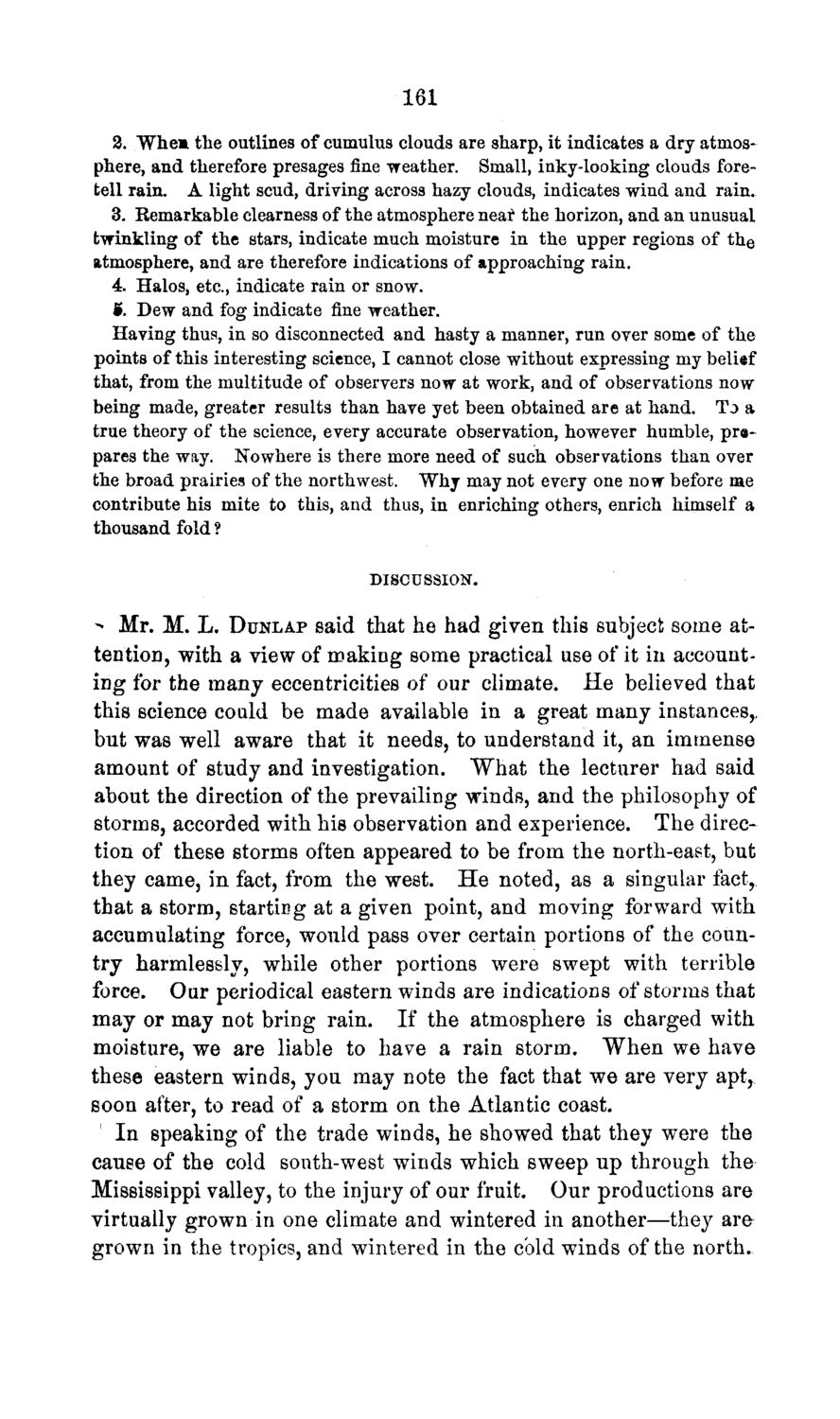| |
| |
Caption: Board of Trustees Minutes - 1869
This is a reduced-resolution page image for fast online browsing.

EXTRACTED TEXT FROM PAGE:
161 2. Whem the outlines of cumulus clouds are sharp, it indicates a dry atmosphere, and therefore presages fine weather. Small, inky-looking clouds foretell rain. A light scud, driving across hazy clouds, indicates wind and rain. 3. Remarkable clearness of the atmosphere near the horizon, and an unusual twinkling of the stars, indicate much moisture in the upper regions of th e atmosphere, and are therefore indications of approaching rain. 4. Halos, etc., indicate rain or snow. 5. Dew and fog indicate fine weather. Having thus, in so disconnected and hasty a manner, run over some of the points of this interesting science, I cannot close without expressing my belief that, from the multitude of observers now at work, and of observations now being made, greater results than have yet been obtained are at hand. To a true theory of the science, every accurate observation, however humble, prepares the way. Nowhere is there more need of such observations than over the broad prairies of the northwest. Why may not every one now before me contribute his mite to this, and thus, in enriching others, enrich himself a thousand fold ? DISCUSSION. ^ Mr. M. L. DUNLAP said that he had given this subject some attention, with a view of making some practical use of it in accounting for the many eccentricities of our climate. He believed that this science could be made available in a great many instances,, but was well aware that it needs, to understand it, an immense amount of study and investigation. "What the lecturer had said about the direction of the prevailing winds, and the philosophy of storms, accorded with his observation and experience. The direction of these storms often appeared to be from the north-east, but they came, in fact, from the west. He noted, as a singular fact, that a storm, starting at a given point, and moving forward with accumulating force, would pass over certain portions of the country harmlessly, while other portions were swept with terrible force. Our periodical eastern winds are indications of storms that may or may not bring rain. If the atmosphere is charged with moisture, we are liable to have a rain storm. When we have these eastern winds, you may note the fact that we are very apt, soon after, to read of a storm on the Atlantic coast. In speaking of the trade winds, he showed that they were the cause of the cold south-west winds which sweep up through the Mississippi valley, to the injury of our fruit. Our productions are virtually grown in one climate and wintered in another—they arc grown in the tropics, and wintered in the cold winds of the north.
| |